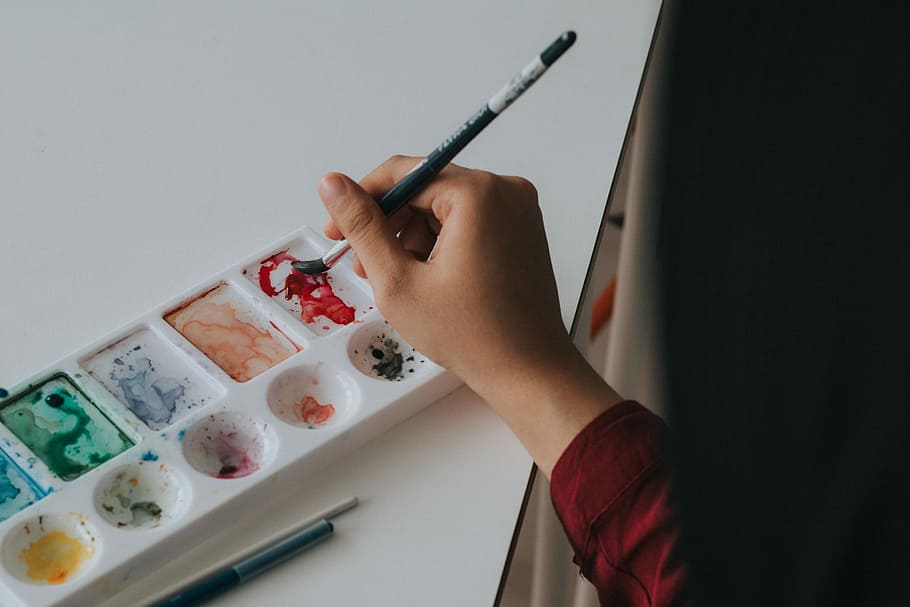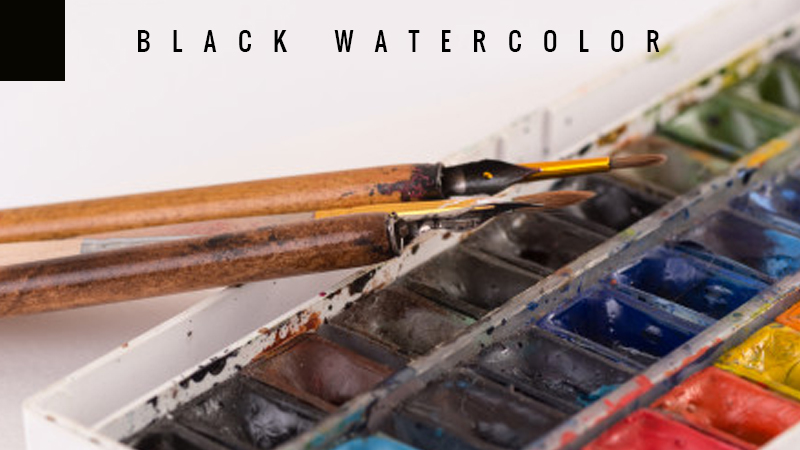How to Make Black Watercolor for Art Paintings
Want to learn how to mix and use black watercolor for your art painting? Stick around as we share the answer.
Watercolor painting is one of the most dainty and delicate forms of visual art.
It is also known as one of the most versatile, as it can have both transparent and opaque qualities. It is also easy to use, especially in cake form.
Because of this, many children start painting with a brush using watercolor. However easy it is to use, this medium can also pose certain challenges, especially when creating deep, dark, and rich colors such as black.
If you want to know more about black watercolor, keep reading…
Different Black Colors
In understanding how to use black watercolor, the first thing you need to look into is the nature of black as a hue.
Black is considered the darkest color, especially as it is the result of the absence of visible light.
There are different types of black hues. The most basic is simply called black.
However, you will find that there are other varieties such as Black Chocolate, which has a brownish-greenish tinge.
Black Bean looks light grayish, while Black Chestnut has a grayish quality but is darker.
It is also easy to mistake some kinds of black for other colors. For example, Alien Black has a dark bluish attribute which is very similar to Black Pearl.
Black Plum has a reddish hint to it, while Glossy Black has a purplish streak. Some types straight-up look like varieties of other colors just like Dark Chocolate and Black Soap.
Which Black Watercolor to Use
With the wide varieties of black, you need to make sure that you use the right one when watercolor painting. You can start by looking at what popular brands have to offer.
Winsor & Newton have Ivory Black, Lamp Black, Mars Black, and Neutral Tiny.
Each one offers a different quality. Ivory Black results in a softer quality, while Mars Black has a deeper and grainier characteristic.
Another brand you should check out is M. Graham & Co’s Ivory Black 110, Lamp Black 112, Neutral Tint 122, and Sepia 178.
The first three can provide you with dark shades, while Sepia offers a lighter and slightly reddish tone.
Art Spectrum also has a variety of black pigments.
Warm Sepia WWS10 and Sepia WS10 give a familiar tinge, but WWS10 has more reddish quality, while WS10 has a darker and richer tone.
You also have the option to get Ivory Black WIB10 and the much darker Lamo Black WLB1.
How to Mix Black Watercolor
Now that you know what options you have when choosing black watercolor, you might be wondering how to effectively use this medium to create the effect you want.
Remember that caked watercolor requires more work, while tubed ones can be easier to use.
You can decide to use caked pigments if you want a portable and long-lasting setup. The colors are easy to revive as well, as they are essentially compacted and dry paint.
However, just make sure to protect your paint from dust as it can easily get into your paint mix, affecting the quality of the colors you use in your work.
You can choose tubes if you want more vibrant colors as these are concentrated pigments.
Tubes are easy to use as you just need to screw on the cap for cleanup. However, if your paint dries up, it can be hard to get the pigment out of the tubes.
To mix black watercolor, just wet your brush and dab it onto the cake. For tubed pigments, just place a small portion on the palette and use your wet brush to mix.
Those who want to take advantage of the transparent characteristic of this medium should use more water, while less water can create an opaque paint.
Black Watercolor in History and Art
The earliest evidence of the use of black watercolor can be found on cave walls. These ancient painters used soot from burnt wood mixed with water.
The ancient Chinese also used this material to create masterpieces and calligraphy. In fact, they have what is called shuimo, which means watercolor and ink freehand painting.
Today, you can find a lot of fine artwork in museums and galleries. The Metropolitan Museum has different watercolor paintings on display.
For an example of Chinese painting, you can check out the display titled Watercolor of Musician Playing Paiban, created in the late 18th century.
It features a rich black pigment to show the dark color of the subject’s hair. Moreover, this hue was also used to create intricate clothing designs.
This dark color was also used by William Trost Richards to create Moonlight on Mount Lafayette, New Hampshire. With moody and dark scenery, this work shows the use of black watercolor to create shadows and dark skies.
Conclusion
Working with watercolor can be both challenging and fulfilling. If you want to create a piece using black watercolor, we hope this brief guide helps you.
Read Latest Posts

Hi, I'm Anthony Tran! Welcome to my site. I live in Arizona and am obsessed with all things related to building an Online Business and working from home. Learn about my journey here.
Follow Online





